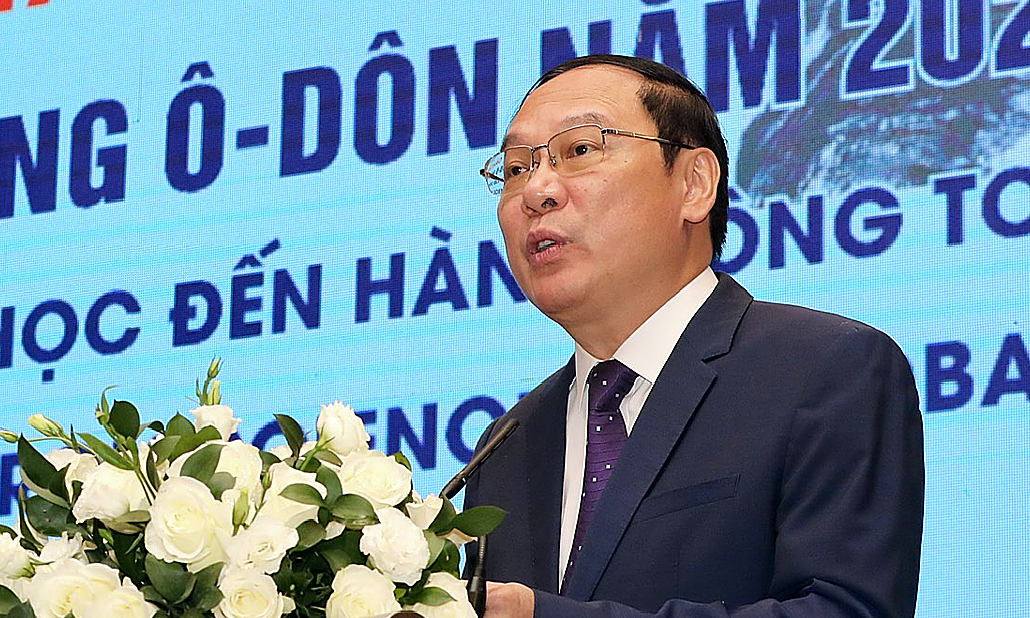This information was shared by Le Cong Thanh, Deputy Minister of Agriculture and Rural Development, at the "Ozone Layer Protection Activities Towards Green Transformation" workshop on 15/9. The data, spanning from 1994 to August 2025, was cited from statistics provided by the International Ozone Secretariat.
Vietnam joined the Montreal Protocol in 1994. This international treaty aims to protect the ozone layer by phasing out the production and consumption of ozone-depleting substances. The ozone layer, a layer in the Earth's stratosphere, acts as a shield, absorbing most of the harmful ultraviolet radiation from the sun, protecting humans, animals, and plants.
Man-made chemicals containing chlorine or bromine, including CFCs, HCFCs, HFCs (refrigerants), and halons (used in fire extinguishers), can destroy the ozone layer.
Vietnam's reduction of 240 million tons of CO2e is attributed to the complete ban on CFC refrigerants and the gradual reduction of import quotas for other substances like HCFCs and HFCs. This year, the HCFC import quota decreased by 67.5% compared to the 2013 baseline, down to 1,300 tons, aiming for complete elimination by 2040. The HFC quota remains at 13.9 million tons of CO2e and will be reduced to 2.7 million tons by 2045.
 |
Le Cong Thanh, Deputy Minister of Agriculture and Rural Development. Photo: Viet Dung |
Le Cong Thanh, Deputy Minister of Agriculture and Rural Development. Photo: Viet Dung
With this roadmap, Vietnam is expected to directly reduce nearly 12 million tons of CO2e annually from 2045, equivalent to the emissions of three coal-fired power plants. According to the Vietnam Energy Efficiency Consultancy JSC (VNEEC), the emission reductions from refrigerant management under the amended Montreal Protocol will help Vietnam reduce over 20 million tons of CO2e from 2050, contributing to the Net Zero emissions target.
Besides climate benefits, the use of environmentally friendly substances also opens up a new area: sustainable cooling. Vietnam joined the Global Cooling Pledge in 2023 and is developing a national plan in this area.
In addition to transitioning to environmentally friendly refrigerants, the national plan aims to use energy efficiently and integrate passive cooling solutions. This means sustainable cooling will be based on nature (forest restoration, lakes, wetlands) or urban design (environmentally friendly materials), rather than just air conditioning. According to the Global Green Growth Institute (GGGI), this sector could unlock economic opportunities worth 290 billion USD by 2030.
To exploit financial opportunities for sustainable cooling solutions, Juhern Kim, GGGI Country Representative in Vietnam, suggested that Vietnam could accelerate sustainable cooling deployment by focusing on a few practical priorities. He recommended that some units connect and consolidate current small, fragmented projects into a larger investment portfolio, attractive enough to investors.
Furthermore, authorities need to clarify the concept of "sustainable cooling" in policy with specific regulations and criteria, similar to the newly issued Vietnam Green Taxonomy, to form a unified reference framework in the market.
The Vienna Convention (1985) and the Montreal Protocol (1987) are considered one of the greatest successes of global environmental cooperation. Scientific evidence shows that the ozone layer is gradually recovering and could return to normal by the middle of this century.
In addition, the Montreal Protocol has also made a significant contribution to slowing global warming, as many ozone-depleting substances are also potent greenhouse gases. To date, 99% of ozone-depleting substances have been phased out globally.
Thuy Truong












